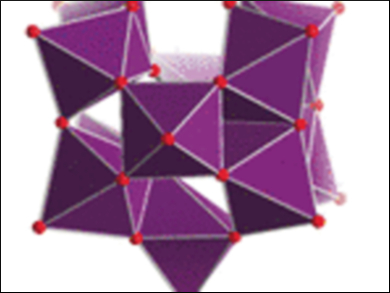Removing Contaminants from Water
Fresh, clean water coming directly from the tap is a true luxury. In developing countries, people often have no choice but to use a contaminated river for drinking water. Water filters can help by quickly converting polluted surface or ground water into safe drinking water. In the journal Angewandte Chemie, researchers have introduced a novel multifunctional composite material that removes inorganic, organic, radioactive, and microbial impurities from water.
Usually, water purification involves a series of filters, each designed to remove a single type of impurity. In contrast, this new filter material is an all-rounder. Scientists from the Universities of Ulm, Germany, and Zaragoza, Spain, have seized upon a relatively new approach for designing materials, which allows molecular components to be assembled into multifunctional composites called SILP materials (supported ionic liquid phases).
An ionic liquid is a salt that is melted at room temperature, making it liquid without being dissolved in a solvent. When such an ionic liquid is adsorbed onto a solid substrate, it forms a solid composite material with properties that can be selectively tuned through chemical modification.
Ionic Liquid Phases Supported on Polyoxometallates
The researchers led by Scott G. Mitchell and Carsten Streb have produced the first SILPs based on polyoxometallates (POM). POMs are molecular transition-metal/oxygen clusters in which the metal atoms are bridged by oxygen atoms to form a three-dimensional network. For the new filter materials, the team selected polyoxotungstate anions. These anions have a binding site which can trap heavy metal ions.
The counterions are voluminous tetraalkylammonium cations known for their antimicrobial effect. The resulting ionic liquids are hydrophobic, immiscible with water, and form stable thin layers on surfaces. By using a porous silicon dioxide support, the researchers obtained dry, free-flowing powders that are easy to transport and handle.
One-Step Multi-Contaminant Purification
In laboratory experiments, the anions of the new composites reliably removed lead, nickel, copper, chromium, and cobalt ions. Radioactive uranium in the form of UO22+ was trapped directly by the silicon dioxide support. Similarly, the water-soluble blue trityl dye, commonly used in the textile industry, was also removed as a result of the lipophilic character of the ionic liquid. The antimicrobial cations effectively halt the growth of E. coli bacteria.
The researchers hope that their new “POM-SILP” filter materials will form the basis for the development of contaminant-specific chemically designed filter systems that can be used for the reliable purification of water in remote areas and developing nations, as well as after natural disasters and chemical accidents.
- Removal of Multiple Contaminants from Water by Polyoxometalate-Supported Ionic Liquid Phases (POM-SILPs),
Sven Herrmann, Laura De Matteis, Jesús M. de la Fuente, Scott G. Mitchell, Carsten Streb,
Angew. Chem. Int. Ed. 2017.
DOI: 10.1002/anie.201611072




